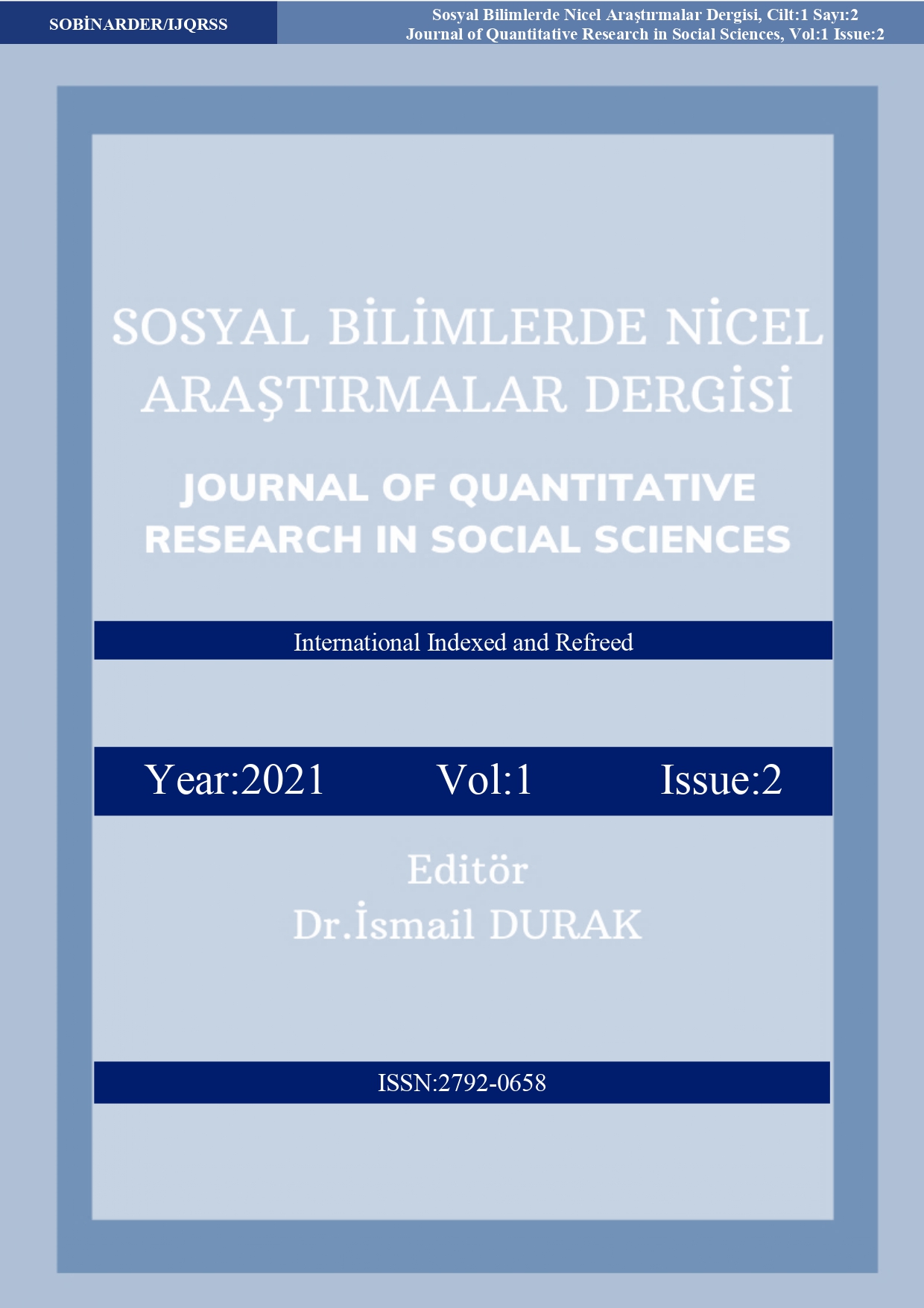A Scale Development Study On Greenwashing
Keywords:
Yanıltıcı Yeşil Reklam Uygulamaları, Çevreci Ürün, Ölçek Geliştirme, Açımlayıcı ve Doğrulayıcı Faktör Analizi, Geçerlik-GüvenirlikAbstract
The main purpose of this study is to develop a five-point Likert-type scale to measure consumers' perceptions of greenwashing practices. The prepared study was carried out on the basis of the quantitative research method. After the literature review for the scale planned to be developed, the 12-item scale form created by the researchers was applied to 404 participants in Düzce province. The data obtained from the participants were evaluated by using SPSS and AMOS programs. Exploratory factor analysis and confirmatory factor analysis were used to control the construct validity of the scale; Cronbach alpha internal consistency coefficient analysis was used to determine the reliability of the scale. As a result of the exploratory factor analysis, the Kaiser-Meyer-Olkin value of the scale was calculated as 0.93, and it was determined that it explained 51% of the total variance. It was seen that the 12-item scale, which was formed as a result of the exploratory factor analysis, had a single factor structure. Afterwards, confirmatory factor analysis was performed with the help of structural equation modeling, it was determined that the obtained fit index values showed good fit and it was seen that the model fit was achieved. In the analysis carried out to measure the reliability level of the scale with construct validity, the Cronbach Alpha internal consistency coefficient was obtained as 0.914. As a result, it has been seen that the developed greenwashing practices scale is a valid and reliable scale.
References
Akgül A. ve Çevik O. (2003), İstatistiksel Analiz Teknikleri, Ankara: Emek Ofset.
Büyüköztürk, Ş. (2015). Sosyal bilimler için veri analizi el kitabı. 21. Baskı. Ankara: Pegem Yayınları.
Carlson, L., Grove, S. J., & Kangun, N. (1993). A content analysis of environmental advertising claims: A matrix method approach. Journal of advertising, 22(3), 27-39.
Coşkun, A. ve Mutlu H.T. (2017), Investigating High School Students' Use of Extramural English: A Scale Development Study, İnsan ve Toplum Bilimleri Araştırmaları Dergisi Cilt:6, Sayı:1, 2017, s.571-590.
Culiberg, Barbara, and Leila Elgaaied-Gambier (2016), “Going Green to Fit In: Understanding the Impact of Social Norms on Pro-Environmental Behaviour, a Cross-Cultural Approach,” International Journal of Consumer Studies, 40 (2), 179–85.
Do Paço, Arminda Maria Finisterra, and Rosa Reis (2012), “Factors Affecting Skepticism towardGreen Advertising,” Journal of Advertising, 41 (4), 147–55.
Ergin, D.Y. (1995). Ölceklerde geçerlik ve güvenirlik, M.U. Atatürk Eğitim Bilimleri Dergisi, 7:125-148.
Habing, B. (2005). Exploratory Factor Analysis. Erişim linki:https://people.stat.sc.edu/habing/courses/530/EFA2005.pdf Erişim tarihi: 19.02.2022
Hair J. F.,Tatham R. L., Anderson R. E. & Black W., (1998), Multivariate Data Analysis, New York: PrenticeHall.
Hartmann P, & Apaolaza-Ibáñez V. (2009). Green advertising revisited: conditioning virtual natüre experiences. International Journal of Advertising, 28(4):715–39.
Hartmann, P., & Apaolaza-Ibáñez, V. (2012). Consumer attitude and purchase intention toward green energy brands: The roles of psychological benefits and environmental concern. Journal of business Research, 65(9), 1254-1263.
Kalaycı, Ş. (2010), SPSS Uygulamalı Çok Değişkenli İstatistik Teknikleri, Ankara: Asil Yayınları.
Karagöz, Y., Mutlu, H.T., Sağır, S. Ve Celil, M. (2019), Kargo Şirketi Seçimini Etkileyen Faktörlerin Belirlenmesine Yönelik Ölçek Geliştirilmesi : Sivas Örneği. Ekonomik ve Sosyal Araştırmalar Dergisi, Cilt 15, Yıl 15, Sayı 2.
Newell, Stephen J., Ronald E. Goldsmith, and Edgar J. Banzhaf (1998), “The Effect of Misleading Environmental Claims on Consumer Perceptions of Advertisements,” Journal of Marketing Theory and Practice, 6 (2), 48–60.
Nyilasy, Gergely, Harsha Gangadharbatla, and Angela Paladino (2014), “Perceived Greenwashing: The Interactive Effects of Green Advertising and Corporate Environmental Performance on Consumer Reactions,” Journal of Business Ethics, 125 (4), 693–707.
Sekaran, U. (1992), Research Methods For Business, Canada: John Wiley ve Sons, Inc
Schmuck, D., Matthes, J., & Naderer, B. (2018). Misleading Consumers with Green Advertising? An Affect–Reason–Involvement Account of Greenwashing Effects in Environmental Advertising. Journal of Advertising, 47(2), 127-145.
Singal, R., Garg, A., Singla, S., & Bhadal, I. E. T. (2013). Green marketing: challenges and opportunities. International Journal of Innovations in Engineering and Technology, 2(1), 470-474.
Stevens, J. P. (2012). Applied multivariate statistics for the social sciences. Routledge.
Terrachoice (2010). The Sins of Greenwashing Home and Family Edition, Erişim linki: http://faculty.wwu.edu/dunnc3/rprnts.TheSinsofGreenwashing2010.pdf Erişim tarihi: 19.01.2022
Turan, F. (2014). Çevre Dostu Şirketler: Yeşil Göz Boyama mı Çevresel Üretim mi?. Hacettepe Üniversitesi Sosyolojik Araştırmalar E-Dergisi, 17 (Ağustos).
Yücel, M., & Ekmekçiler, Ü. S. (2008). Çevre dostu ürün kavramina bütünsel yaklaşim; temiz üretim sistemi, eko-etiket, yeşil pazarlama. Elektronik Sosyal Bilimler Dergisi, 7(26), 320-333.
Downloads
Published
How to Cite
Issue
Section
License
Copyright (c) 2021 Journal of Quantitative Research in Social Sciences

This work is licensed under a Creative Commons Attribution-NonCommercial 4.0 International License.
Telif hakkı hakkında










